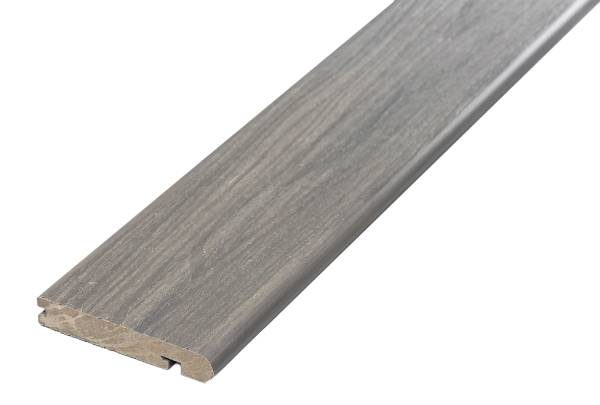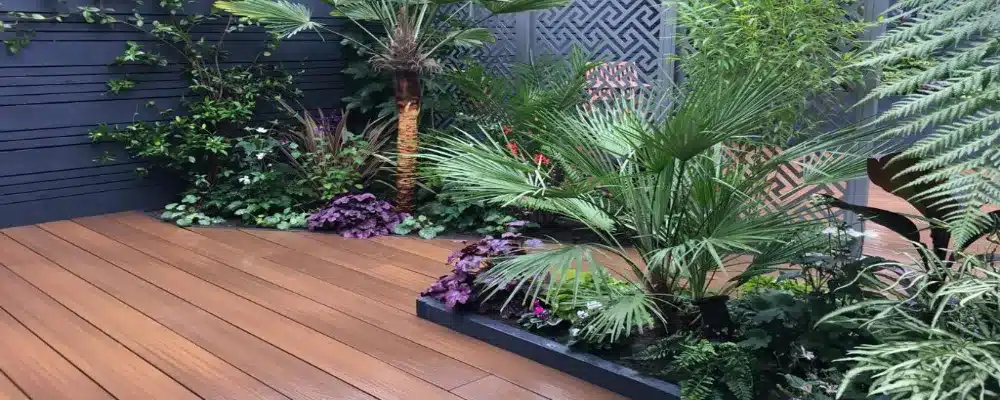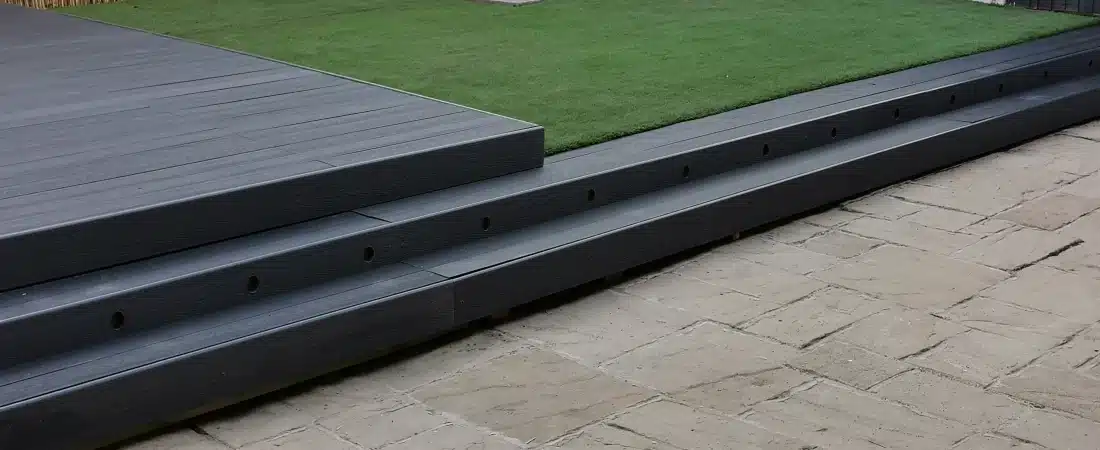What is the Best Wood to Use for Decking?
To answer this question, we will first look at the true definition of waterproof, as the meaning is often misunderstood in the industry. If something is waterproof, it is completely impervious to water, meaning the material will be able to fully resist the entry of liquid, therefore maintaining its integrity. Composite decking is not completely waterproof; it can absorb water and will generally swell and shrink as the climate changes. This is completely normal. You will often hear composite decking described as water-resistant rather than waterproof. In this article, we will look at the reasons for this, how to manage the process of swelling and how to ensure you choose the best decking board for your home.
Why Does Composite Decking Absorb Water?
Composite decking’s resistance to moisture is far greater than that of timber decking. However, given that composite decking is partially made from wood, you will still see some level of moisture absorption in first-generation and even second-generation composite boards. When moisture gets trapped under the decking and on top of the timber joists, it stays there and prevents it from drying properly. This is different from wood, which is more susceptible to rot and decay when not properly dried. If you are looking for quality, water-resistant composite decking, you must do your due diligence and research the different designs on the market.
First Generation VS Second Generation
One design is the first-generation composite decking board. Compromising recycled plastic bottles and a wood-fibre surface layer, this design’s waterproof capabilities are inferior when compared to the second generation. This earlier design of composite records a low to medium slip risk when exposed to wet conditions and the amount of swelling will be greater in comparison with the second generation.
Homeowners in search of high-water-resistant composite decking should opt for second-generation products that are fortified with a capping that acts as a protective membrane against moisture. The capping not only ensures a better level of water resistance, it will also provide a surface with improved slip resistance.
Choosing The Correct Decking
The second generation is a more advanced material, but it comes with a bigger price tag. Therefore, you may be asking – is it worth it in my case?”
If you’re looking for the best water resistant decking, we would assume you’re installing your decking close to water. Water is commonly known for damaging wooden decks over time creating swelling, shrinking, cracking leading to structural failure and especially increasing the risk of slipping.
Composite decking is a mix of wood and plastic meaning it will absorb water but nowhere near the amount we associate with wood. Although we wouldn’t recommend first generation to be installed close to water, second generation with the added protection (PE layer) would be a perfect choice.
Another recommendation when installing close to water is to use a solid core, please note when we say close to water we are talking about a hot tub, pond or canal, not submerging the boards in water. Why? composite will absorb moisture in its core and will swell, hollow boards have a weaker core as they will at times hold water in its hollow structure this can create cracks over time, whereas a solid core will stand the test of time.
To summarise, first-generation boards are still an excellent choice for your residential living space; just take extra care when the decking is wet and don’t install near vast amounts of water, if you want the boards to stand the test of time. If you are someone who is not on a budget and the water resistance is a big concern, then second generation is the right decking style for you.

Ensuring Your Decking Is As Waterproof As Possible.
As discussed previously, opting for a second-generation product will increase water resistance in your new outdoor living space.
Besides that, following your supplier’s installation guidelines and instructions will ensure a greater level of water resistance and durability. For example, using hidden fasteners rather than screwing through your decking boards is a huge factor when determining your deck’s ability to absorb water. Given that hidden fasteners don’t penetrate the surface of the boards, there are fewer points for water to enter. This will significantly reduce the chances of water-related damage such as excessive swelling and the accumulation of mould and mildew. In fact, these problems become almost non-existent when using hidden fasteners.
Another factor surrounding installation is ensuring you leave the correct gaps for drainage. The hidden fasteners will allow for a gap between each decking board between 3-6mm (depending on the clip that you purchased, checks must still be carried out). End to end, we recommend leaving 8mm for drainage and thermal expansion. These precautions will ensure that there is never an accumulation of puddles and pools of water on your decking.
Conclusion
Composite decking is not completely waterproof; however, you can purchase more advanced designs, such as second-generation boards, that have a greater level of durability and water resistance. In addition to this, ensuring that you follow the correct installation guidelines will improve longevity and resistance against moisture over time.
Is PVC Decking Slippery When Wet?




